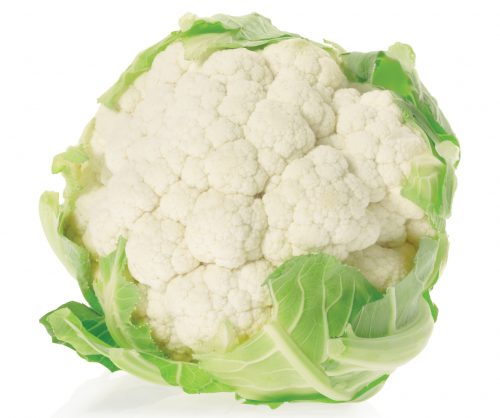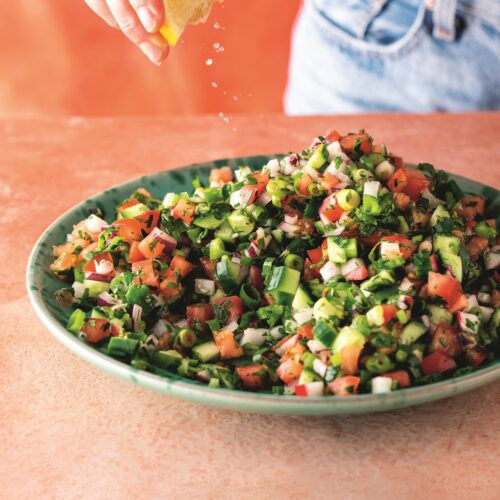
Cauliflower, from the Latin word meaning ‘cabbage flower’, is a member of the brassica family. While white cauliflower is most familiar, there are also green, purple and orange varieties.
Buying
Choose cauliflower with firm, compact heads and a creamy, white colour. Watch for brown spots on the curds and heads that are starting to separate. Heads surrounded by thick green leaves are better protected and will often be fresher.
Storing
Store in a paper or plastic bag in the fridge with the stem-side down (this will prevent moisture from developing in the florets, causing it to deteriorate).
Nutrition
Cauliflower is an excellent source of vitamin C and a source of some B vitamins (folate and vitamin B6), vitamin K and fibre. Like other brassicas, it contains many phytonutrients such as glucosinolates. Purple varieties also contain anthocyanins and orange varieties carotenoids.
Using
This vegetable has so many options for serving other than cauliflower cheese:
- Cauliflower and potatoes make a good vegetable curry combo.
- For delicious soup, purée cooked cauliflower, adding fennel seeds, water or vegetable stock and your favourite herbs and spices.
- Serve raw or blanched with dip (parsley hummus is a great accompaniment).
- Cauliflower purée makes a substitute for mashed potato.
- Rather than boiling or steaming cauliflower, try roasted cauliflower with garlic or pan-fry (cut florets in pieces about the size of a grape and toss in a hot pan, sprinkle with salt, olive oil and your choice of spices and seasonings such as garlic, chives, lemon, parmesan cheese, chilli, curry powder or paste or nutmeg).
- Combine cauliflower and black olives in a simple gratin.
- Make a gluten-free pizza crust with grated cauliflower bound with egg and a little cheese, flavoured with herbs.
Did you know? “Cauliflower is cabbage with a college education,” said Mark Twain.
www.healthyfood.com










